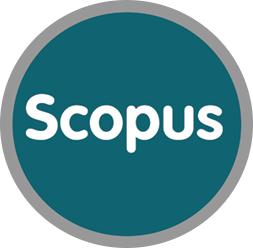Вплив нанокомпозитів з пролонгованим вивільненням біоактивних речовинна життєдіяльність дріжджових клітин
DOI: https://doi.org/10.15407/hftp06.04.545
Анотація
Ключові слова
Посилання
1. Gerashchenko I.I. Membranotropic properties of nano-sized silica.Surface. 2009. 1(16): 288.[in Russian].
2. Siora I.V. Effect of hydrophobization and modification of nanosilica by proteins and saccharides on biocompatibility of the composites on their basis.Ph.D (Chem.) Thesis. (Kyiv, 2014). [in Ukrainian].
3. Gun’koV.M., GalaganN.P., GrytsenkoI.V., ZarkoV.I., OranskaO.I., Osaulenko V.L., BogatyrevV.M., TurovV.V. Interactionofunmodifiedand partially silylated nanosilica with red blood cells. Cent. Eur. J. Chem. 2007. 5(4): 951. https://doi.org/10.2478/s11532-007-0045-5
4. Technological process of obtaining of biogenic stimulators. (Frunze: Kyrgyz State Med. Institute, 1983). [in Russian].
5. Krupska T.V., Volod’kina A.V., Gerashchenko I.I., Gladkikh Yu.V. Study of biostimulatory effect of placenta preparations by yeast growth test. Med. Chemistry. 2010. 12(2): 40. [in Ukrainian].
6. Krupskaya T.V., Gun’koV.M., Barvinchenko V.N., Turov V.V. Shulga O.V. Interaction of silica particles with cellular surface and state of interfacial water in area of contact. Ukr. Chem. J. 2008. 74(2): 84. [in Russian].
7. Johnson S., Nguyen V., Coder D. Assessment of Cell Viability. In: Current Protocols in Cytometry. (NY: Core Publ., John Wiley & Sons, Inc., 1997).
8. Lurie Y.Y. Analytical chemistry of industrial wastewater. (Moscow: Khimiya, 1984). [in Russian].
9. Pyatnitski I.V., Sukhan V.V. Analytical chemistry of silver. (Moscow: Nauka, 1975). [in Russian].
10. Korenman I.M. Photometric Analysis. Methods for the determination of organic compounds. (Moscow: Khimiya, 1970). [in Russian].
11. Yusupova A.I., Kamzolova S.V., Kozyreva T.N., Morgunov I.G. Yeast biosynthesis of succinic acid from ethyl alcohol. Ovchinnikov Bulletin of biotechnology and physical and chemical biology. 2006. 2(4): 7. [in Russian].
12. Kotenko S.Ts., Khalilov E.A., Islammagomedova E.A. Biochemical features of yeast strain Saccharomyces cerevisiae in conditions of spirit fermentations. Reports of the Samara Scientific Center of the Russian Academy of Sciences. 2010. 12(1): 721. [in Russian].
13. Putintseva O.V. Immunology: Practicum. V. 2. (Voronezh: Publishing house of Voronezh State University, 2008). [in Russian].
14. Anikeyev V.V., Lukomskaya K.A. Guide to practical lessons in microbiology. (Moscow: Prosveshchenie, 1977). [in Russian].
15. Philippovich Y.B. Fundamentals of Biochemistry. (Moscow: Agar, 1999). [in Russian].
DOI: https://doi.org/10.15407/hftp06.04.545
Copyright (©) 2015 I. V. Siora, O. S. Kukolevska, T. V. Krupska, I. I. Gerashchenko


This work is licensed under a Creative Commons Attribution 4.0 International License.



